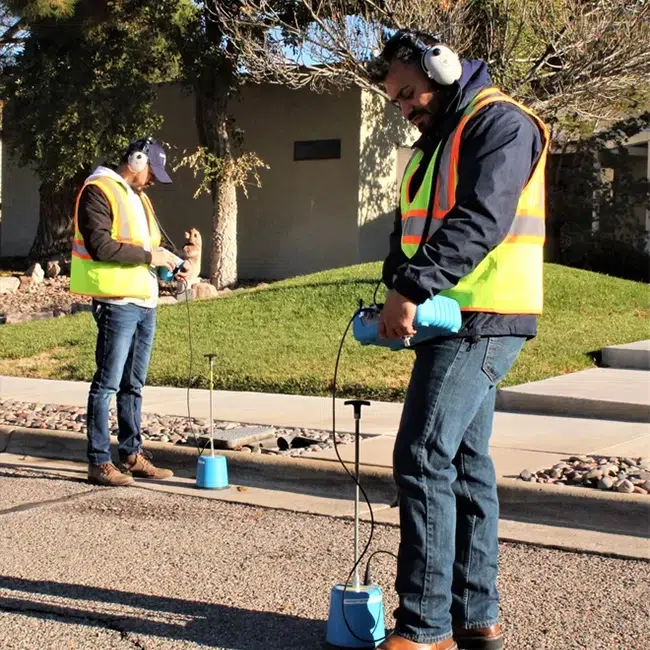Discover Reliable Water Leak Detection Providers for Accurate and Fast Outcomes
Discover Reliable Water Leak Detection Providers for Accurate and Fast Outcomes
Blog Article
Cutting-edge Solutions for Early Discovery of Water Leaks in Structures and Framework
As the honesty of structures and framework is vital, the obstacle of very early detection of water leaks has stimulated innovative options that guarantee to reinvent the way we guard against prospective problems. From sophisticated leak detection technologies to the release of IoT sensors for real-time tracking, the landscape of leakage avoidance is developing swiftly. Maker learning algorithms offer a look into the future of leakage prediction, while thermal imaging provides a non-intrusive technique for determining hidden leaks. Automated water circulation analysis systems are reshaping exactly how leaks are identified and dealt with, leading the method for a positive strategy to water leak detection. Each of these remedies holds the vital to guaranteeing the integrity and long life of our developed environment, triggering a shift in the direction of a more sustainable and efficient future.
Advanced Leakage Detection Technologies
Advanced leakage discovery modern technologies, geared up with sophisticated sensors and algorithms, play a vital role in promptly recognizing and pinpointing water leakages in various setups. These technologies employ a mix of acoustic, thermal, and electro-magnetic sensing approaches to discover leaks precisely. Acoustic sensing units identify the sound of getting away water, enabling for specific localization of the leakage resource. Thermal imaging identifies temperature adjustments triggered by water leak, giving an additional effective method for leak identification. Electromagnetic sensing units can identify modifications in electromagnetic areas caused by water, offering yet an additional layer of leak discovery capacity.

IoT Sensors for Real-Time Tracking
In the world of modern water leakage detection, the integration of IoT sensing units for real-time monitoring represents a critical improvement in improving positive leakage discovery capacities. These sensors offer continual monitoring of water supply, giving real-time information on water circulation rates, stress variations, and temperature adjustments. By leveraging IoT innovation, these sensors can find even the tiniest anomalies in water use patterns, making it possible for early recognition of potential leaks before they escalate right into major problems.
IoT sensors transmit data to a centralized system, where sophisticated algorithms evaluate the info and produce signals or notifications when irregularities are identified. This real-time surveillance ability permits property proprietors or facility managers to promptly address leaks, decreasing water damage, lowering fixing expenses, and saving water resources.
Additionally, IoT sensing units can be incorporated with building administration systems, permitting computerized actions to discovered leaks, such as shutting down water valves or triggering pumps to mitigate the impact of leakages. Overall, the implementation of IoT sensors for real-time monitoring substantially improves the efficiency and effectiveness of water leakage discovery in structures and infrastructure.
Artificial Intelligence Algorithms for Leak Prediction

One trick advantage of making use of maker learning for leak forecast is its capability to continuously learn and boost its accuracy over time. As even more information is accumulated and fed into the formula, it can refine its forecasts and adjust to transforming conditions, inevitably increasing the integrity of leak discovery systems.
Furthermore, artificial intelligence algorithms can assist in identifying subtle signs of leakages that might go undetected by standard surveillance approaches. water leak detection. By analyzing complicated data sets in real-time, these algorithms can provide early warnings and informs, allowing for Click Here prompt intervention and precautionary upkeep to alleviate potential water damage and associated prices
Utilizing Thermal Imaging for Leakage Detection
Thermal imaging innovation offers an appealing approach for identifying water leaks in various systems and infrastructures. By using infrared radiation and temperature level differences, thermal imaging video cameras can identify covert leakages that are not quickly visible to the nude eye. When water leaves from pipes or structures, it typically transforms the temperature level of the bordering area, creating temperature differentials that thermal cameras can catch. These temperature irregularities are then equated into visible photos, highlighting the specific area of the leakage.
One of the crucial benefits of thermal imaging for leakage detection is its non-intrusive nature. Overall, the usage of thermal imaging modern technology enhances the efficiency and accuracy of water leak discovery, making it a valuable tool for keeping the stability of buildings and frameworks.
Automated Water Circulation Evaluation Equipments
Just how can computerized water circulation evaluation systems change the discovery and monitoring of leaks in various systems and infrastructures? Automated water flow analysis systems supply a positive strategy to leakage detection by constantly checking water circulation rates and patterns. By establishing standard information, these systems can rapidly recognize variances that may show click reference a leak, enabling timely intervention to avoid considerable damages.
These systems use sophisticated algorithms to Clicking Here assess real-time information and offer instant informs when anomalies are detected, enabling quick activity to be taken. In addition, computerized water circulation analysis systems can be incorporated with building monitoring systems or IoT systems, boosting general effectiveness and allowing remote surveillance abilities.
Additionally, the data collected by these systems can be used for predictive maintenance objectives, assisting to identify potential weak factors in the framework before leaks happen. On the whole, the implementation of automated water circulation analysis systems can considerably boost leak discovery and monitoring practices, ultimately resulting in set you back savings, decreased water wastefulness, and boosted sustainability in buildings and facilities.

Verdict
Finally, the combination of advanced leakage discovery technologies, IoT sensing units, maker learning algorithms, thermal imaging, and automated water circulation evaluation systems uses innovative remedies for very early discovery of water leaks in structures and infrastructure. These modern technologies allow real-time tracking, forecast of leaks, and efficient discovery approaches to avoid water damages and waste. Applying these services can aid in keeping the stability and sustainability of water supply in various setups.
Report this page